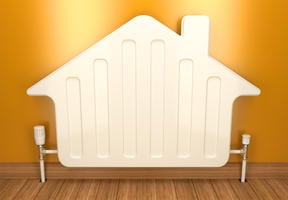Housing: Home Automation for the Connected House
10 min read
From smart meters to programmable appliances and connected devices, solutions are on the rise. Thanks to these new technologies, our homes are becoming smart, interactive and energy efficient.

© THINKSTOCK - Digital solutions mean homes are increasingly "smart".
Home automation first emerged in the 1980s, and was initially aimed at electronics and automation enthusiasts. Today, it targets a far wider audience, in applications covering comfort, safety, communication and energy savings.
Smart Homes
Household appliances from vacuum cleaners, washing machines and refrigerators to dishwashers and microwave ovens have proliferated and become increasingly energy efficient since the 1950s. Advances in electronics and the advent of the Internet have made these appliances programmable and interactive, or what we now call "smart".
The challenge today is to connect all these household appliances and devices together. Home automation controllers available on the market handle remote surveillance and control temperature, lighting and door and window opening, as well as music, robot vacuums and garden sprinkler systems.
Phone and Internet service providers are also entering the market by incorporating home automation functions in their modem routers, mainly centering on remote surveillance and energy consumption. The triple play service, which combines broadband Internet access, television and telephone, is about to become quadruple play by adding home automation.
Most of these controllers can now be programmed from a computer or smartphone,1 via easy-to-use, scalable interfaces. The design and user-friendliness of home automation systems are constantly being enhanced. However, there is still some way to go in terms of return on investment: these systems remain expensive, despite the savings they offer.
Next Level: Network-wide Interconnection
One aim of home automation is to improve the overall
of housing stock. By moving up to the next level and connecting homes to each other via smart meters, the performance of the entire
grid can be improved by eliminating peaks in demand. This is the idea behind smart grids.
Sources:






















